Welcome to Chapter 5 of The T-shirt Business Ultimate Success Guide.
A distinct brand in the bustling t-shirt business isn't just a nice-to-have; it's your lifeline. This chapter is your roadmap to carving out a unique identity amidst a sea of creativity and competition. We'll dive into the essentials of branding your t-shirt venture, from pinpointing your core values to communicating your essence through every shirt you print.
We know branding can seem overwhelming, especially for novice fashion entrepreneurs. That's why we've simplified this process into doable, tactical steps tailored for t-shirt business owners like you. Whether sketching your inaugural logo or honing your brand narrative, this chapter will arm you with expert insights and tools to transform your vision into a memorable brand that wins customer loyalty. One of the most important steps before you purchase your blank apparel and start printing!
Let's start this journey to make your t-shirt brand not just seen but unforgettable.
Table of Contents
- Define Your Brand's Core Identity
- Create a Memorable Brand Name and Slogan
- Develop a Unique Visual Identity and Logo
- Optimize Brand Placement on T-Shirts
- Ensure Brand Consistency Across All Channels
- Craft a Compelling Brand Story
- Implement a Brand-Focused Marketing Strategy
- Evaluate and Evolve Your Branding Strategy
- Conclusion

Step 1: Define Your Brand's Core Identity
Establishing a solid core identity fuels a t-shirt brand's success. This identity shapes all facets of your business, from designs to marketing approaches. In this step, we focus on crystallizing your brand's mission, vision, and values - crafting a solid base to build a memorable, high-impact brand.
Clarify Your Brand's Mission, Vision, and Values
Summarize Your Brand in Three Words: First, encapsulate your brand's essence in just three words. This distillation spotlights the most vital facets of what your brand embodies - its personality, appeal, and purpose. These words should reflect your brand's heart and soul.
Craft a Clear Mission Statement: Your mission statement communicates your brand's reason for being. Succinctly describe what you offer, your target customer, and your motivations. A tight mission statement steers your choices and helps customers grasp what drives you.
Set Core Values That Define Your Brand: Core values are the guiding tenets influencing your brand's every move and decision. They help determine if you're fulfilling your business objectives. These values should permeate every brand touchpoint, from t-shirt design to customer interactions - creating a consistent, trustworthy image.
Analyze and Understand Your Target Audience
Develop Detailed Buyer Personas: Buyer personas represent your ideal customers, crafted through market research and accurate data on existing clientele. When profiling, consider defining factors like age, job, passions, and lifestyle. These fictional yet realistic personas help discern customer needs, behaviors, and aims - allowing you to fine-tune branding and marketing accordingly.
Study Customer Demographics and Psychographics: Demographics like age, gender, pay, and education provide a skeleton of who comprises your customers. Psychographics go deeper - values, mindsets, hobbies, and way of living. Understanding both paints a vivid picture to create messages that resonate profoundly.
Align Your Brand with Customer Values: Nowadays, shoppers often choose brands that mirror their personal convictions. Pinpoint what matters to your audience - sustainability for eco-conscious types or social responsibility for community-minded ones. Embedding those values in your brand identity attracts alignment and forges loyalty.
Establish a Consistent Brand Voice and Personality
Create a Distinctive Brand Voice: Your brand voice - how you converse with customers - should be unique and reliable across channels. Whether playful, serious, or inspirational, it should encapsulate your essence. Consider the emotions you aim to spark in client interactions and let this style the tone of your communications.
Choose Brand Personality Traits: Brands boast personalities, just like us. Do you wish to be friendly and accessible or polished and exclusive? Picking traits in tune with your identity and target audience forges cohesive experiences. These should shine through marketing assets and customer conversations alike.
Align Brand Voice with Audience and Mission: Your voice must resonate with customers and strengthen your mission. If you're about empowering creativity, an imaginative, supportive voice fits. Regularly review content to ensure consistency with your personality while effectively communicating core values.
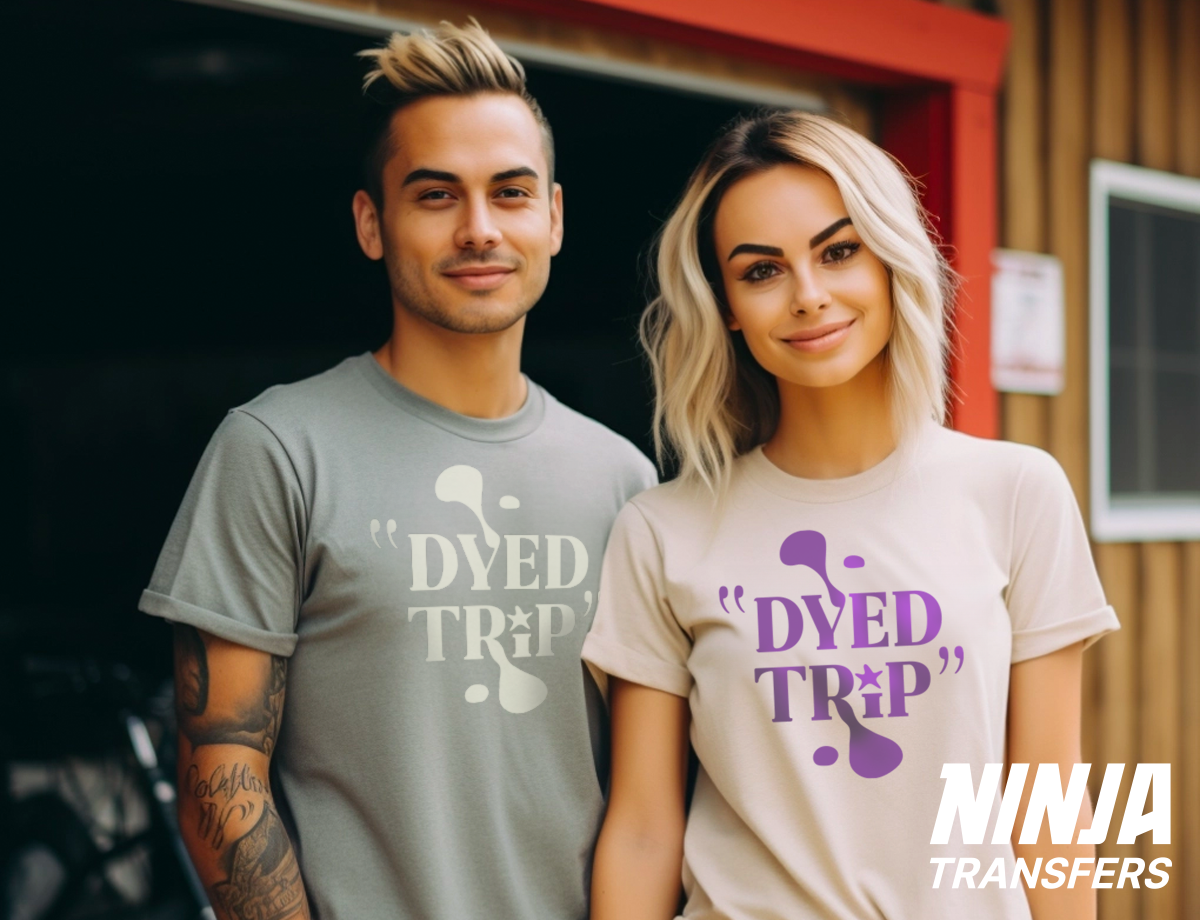
Step 2: Create a Memorable Brand Name and Slogan
A strong brand name and slogan cement your identity and seize customer attention. We'll explore crafting a unique, unforgettable brand name encapsulating your t-shirt venture's essence.
Brainstorm a Unique and Memorable Brand Name
Innovate New Words: Concocting an original word for your name can ensure memorability. Blend terms, tweak spellings, or invent something new. The trick is making it catchy, easy to say, and evoking your personality and values.
Examples:
- Häagen-Dazs (ice cream) - invented word meant to sound Danish/European
- Xbox (gaming console) - created from "DirectX" and connoting improved experiences
- Google (search engine) - a misspelling of "googol" representing vast information
Transform Existing Words: Reimagining actual words also works. Fuse them oddly, twist meanings, or use them unusually for your niche. The goal is to make the familiar feel fresh and meaningful for your brand.
Examples:
- FatFace (retailer) - given new meaning by pairing "fat" and "face" unexpectedly.
- BrickHouse Security (security products) - fresh metaphor of strength and safety
- Epicurious (recipes) - blends "epicurean" and "curious" to signal culinary exploration.
Use Suggestive Words or Metaphors: Descriptive words or metaphors can efficiently relay your essence. An eco-friendly brand could incorporate natural wording, for example. These names spark vivid mental images and emotions, making your brand stickier.
Examples:
- Patagonia (apparel) - brings to mind "romantic visions of glaciers tumbling into fjords, jagged windswept peaks, gauchos and condors"
- Snake Oil Provisions (grooming) - a metaphor for a cure-all elixir
- Giant Robot (media) - visual metaphor conveying something remarkable/larger than life
Make Bold Claims: Alternatively, making claims directly about your brand's offerings, impact, or identity can effectively position you in the market. The key is to declare something compelling yet credible that conveys your unique selling proposition.
Step 3: Develop a Unique Visual Identity and Logo
A stellar visual identity and logo set your brand apart and foster customer resonance. We'll explore key aspects of visual branding, guiding you to curate colors and typography encapsulating your essence.
Select a Color Palette and Typography That Reflect Your Brand
Apply Color Psychology: Hues exert immense influence over perceptions and emotions. Capitalize on color psychology to pick shades, sparking your desired audience reactions. For example, Blue can signal trust and dependability, while green may convey growth and eco-consciousness. Choose colors that mirror your personality and values.
Choose Fonts for Readability and Brand Fit: Typography impacts legibility and brand personality. Pick readable fonts across mediums that also reflect character. A modern tech brand might favor clean sans-serifs, while a vintage brand could choose more classic serifs. Ensure typography aligns with your visual identity and effectively communicates tone.
Visual Identity Pro Tips:
- Limit the primary palette to 2-4 colors for cohesion
- Vary fonts between headings and body text
- Test legibility across printing methods
- Create a visual style guide to ensure consistency
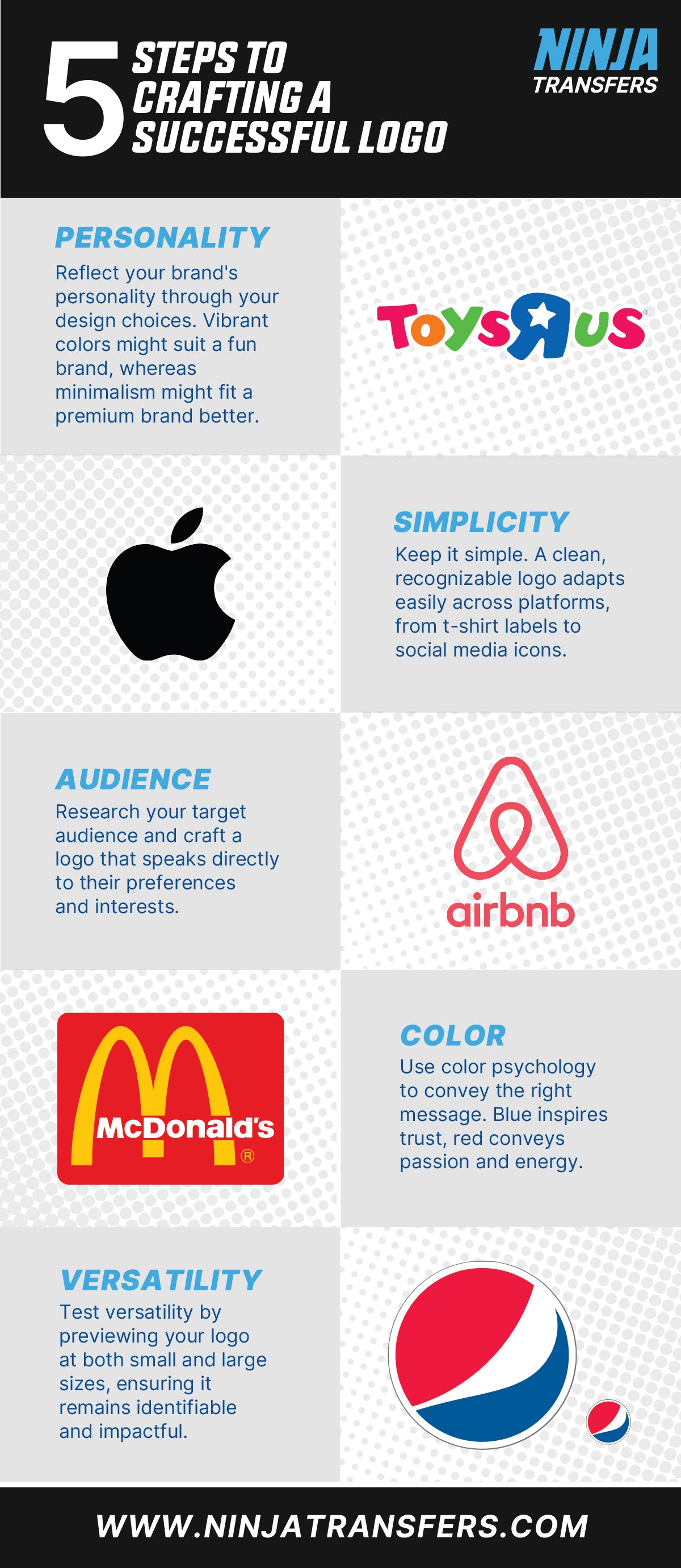
Design a Logo That Balances Simplicity and Memorability
Consider Various Logo Category Styles
Abstract logos use geometric shapes, lines and colors to communicate sophistication and versatility symbolically. Their ability to precisely convey abstract ideals can make these logos adaptable and polished.
Symbol logos creatively integrate recognizable visuals like eyes, lighthouses, or paintbrushes to encapsulate your brand vision. Their ingenuity with symbolic representations can aid memorability.
Type-only logos spotlight a specially designed brand name typography treatment. Custom font selections reflect personality while maximizing legibility.
Mascot logos anthropomorphize your brand into a friendly character customers can bond with. Their literal, playful nature fosters approachability and familiarity.
Emblem logos feature intricate, crest-like icons evoking heritage, credibility, and craftsmanship. Resembling a historic seal, these traditional logo marks imply authority.

Weigh Logo Creation: Outsource vs DIY
Hiring a professional graphic designer creates polished results but costs thousands at full-service agencies. Affordable alternatives exist, like design contest platforms. On Fiverr and 99Designs, you outline requirements so designers pitch concepts, then select your favorite logo option.
Conversely, a DIY approach enables logo creation on a modest budget but requires existing graphic chops. User-friendly online logo generators empower novice business owners to craft logos without formal training. However, autogenerated logo results tend to appear unprofessional. Unless you have design skills, it's advisable to hire an affordable designer for branding that resonates.
Case Study: Supreme's Impactful Branding in Streetwear
Founded in 1994, Supreme ultimately rose from a small NYC skate shop into one of the most influential streetwear brands globally. Their logo is a perfect case study for effective branding.
At the core lies Supreme's iconic red and white logo, featuring its name prominently in a unique custom font. This bespoke typography instantly stands out while hinting at founder James Jebbia's background in graphic design and prior streetwear ventures.
This pared-down yet distinctive logo encapsulates several vital branding principles:
- Simplicity - The clean, readable typeface, unencumbered by effects, reflects skating and streetwear's casual rebel aesthetic.
- Differentiation - The custom slim font with spaced letters carved a unique niche in the market.
- Adaptability - Placing emphasis solely on the wordmark maximizes pairing flexibility across products from t-shirts to accessories.
- Consistency - The logo etched itself as a staple streetwear status symbol through steadfast unified application over almost 30 years without ever changing.
Through restraint and continuity, Supreme cultivated an iconic logo that catalyzed explosive growth for its coveted community-driven brand - one now grossing over $1 billion annually. Its logo's instant recognizability today sparks fervent excitement among loyal fans globally.
[image: Supreme clothing - showcasing the logo on various items and models]
Step 4: Optimize Brand Placement on T-Shirts
Strategic brand placement on your t-shirts can significantly enhance brand recognition and appeal. This step focuses on the art of determining the most effective placement for your logo to maximize visibility and maintain aesthetic appeal, ensuring that your brand stands out in the highly competitive t-shirt market.
Determine Optimal Logo Placement for Visibility and Aesthetics
Understand Effective Logo Positions: Logo placement dramatically impacts visibility and appeal. Common shirt print spots include the sleeve edge, upper back at the hem, or inside collar. A unique alternative is the lower front hem to one side. Consider where your logo can live synergistically with the design while attracting high-eye focus.
Balance Logo Size: Equally important is properly scaled sizing. An oversized logo overwhelms while an undersized one gets drowned out. Aim for a sufficient size to draw attention without hijacking focus from the overall graphic. This balance enables prominent branding without visually shouting.
Print Method Considerations:
- Screen printing suits single-color logos well
- Digital printing expands full-color options
- DTF transfer logos enable full-color logos with more flexibility
- DTF transfer patches add dimension and elevate the value
- For budget prints, forgoing a logo keeps costs down

Integrate Brand Elements Seamlessly with T-Shirt Designs
Artful integration is key for recognition and appeal for apparel brands that want to bake visual identity into designs. Strategically showcase your essence on shirts beyond just logo slapping—think working brand colors, patterns, or quips into layouts. Blend your logo, color palette, and typography into graphics, making them feel intrinsic to the look, not an afterthought. This can also help you decide which print method is going to be best to display your brand on apparel and promo products. For example, if your design is particularly intricate, DTF transfers may be a better fit than DTG.
The goal is enhancing a design's draw through the thoughtful infusion of your markers—cultivating products inherently and distinctly "you." This harmonious branding symbiosis makes customers feel connected to your brand's identity.
Step 5: Align Your Brand Across All Customer Touchpoints
In our digitally integrated world, customers engage with brands across many platforms—from social media to real-life encounters. This step spotlights the imperative of complete brand alignment across every touchpoint. We'll explore specific tactics to maintain consistent branding throughout your online presence, physical products, communications, and more. When customers receive a unified brand experience at all times, familiarity and loyalty grow.
Create a Style Guide: Unify Branding Physically and Digitally.
A style guide works like an internal rulebook, recording vital brand identifiers so anyone creating content adheres to uniform guidelines. This reference manual should include specifications on logo usage, color palettes, typography choice, graphic elements, photographic styles, and tone of voice dos and don'ts.
With a style guide, your online presence and physical products maintain consistent branding. For example, your website, packaging, and tees utilize the same color scheme, logo placement, and personality-infused messaging. This consistency strengthens familiarity and trust as customers engage across channels.
Branded assets like business cards, hang tags, and email signatures should align with your visual identity. When every touchpoint triggers a cohesive mental imprint of your brand.

Step 6: Share the Story Behind Your Brand
An origin story hooks consumers seeking deeper brand connections. Outline your founding motivations, early hurdles, and values still guiding decisions. Frame it around customers partnering with your brand to overcome struggles in actualizing aspirations. Authentic backstories make audiences invested in your success.
Learn Brand Storytelling Fundamentals
Outline Your Journey: Spotlight the creativity and perseverance behind launching your passion project apparel venture. An authentic genesis story waiting to inspire.
Structure As a Customer Hero Tale: Position customers as protagonists who resolve pain points with your brand's help. The "conflict” could involve difficulty locating affordable statement tees. Your brand “resolves” these struggles as their ally. This technique highlights your community-serving purpose.
Bond By Sharing Your Story
Storytelling forges connections when audiences recognize similar experiences. Share methods to relay your tale in ways that elicit empathy and loyalty by humanizing your journey.
Relate Milestones: Highlight inspirations, hurdles, and hard-won victories many entrepreneurs face. Celebrate early landmarks like securing funding or first sales only achieved through grit. This builds kinship.
Convert Customers into Advocates: Showcase how aligned values guide decisions empowering self-expression. This resonance sparks satisfied devotees to reference your apparel and origin story sincerely. Fueling exponential word-of-mouth visibility and sales.
Craft Distinct Messaging Across Social
Strategically Style Content: Align messaging with each platform's strengths while maintaining essence. Instagram favors visuals, Twitter commentary, and Facebook storytelling.
Reinforce Via Creative Messaging: Spotlight values and community. Share user content and committed artists keeping crafts like printing alive. Respond to cultural conversations on identity or sustainability. This visibility entrenches affinity.
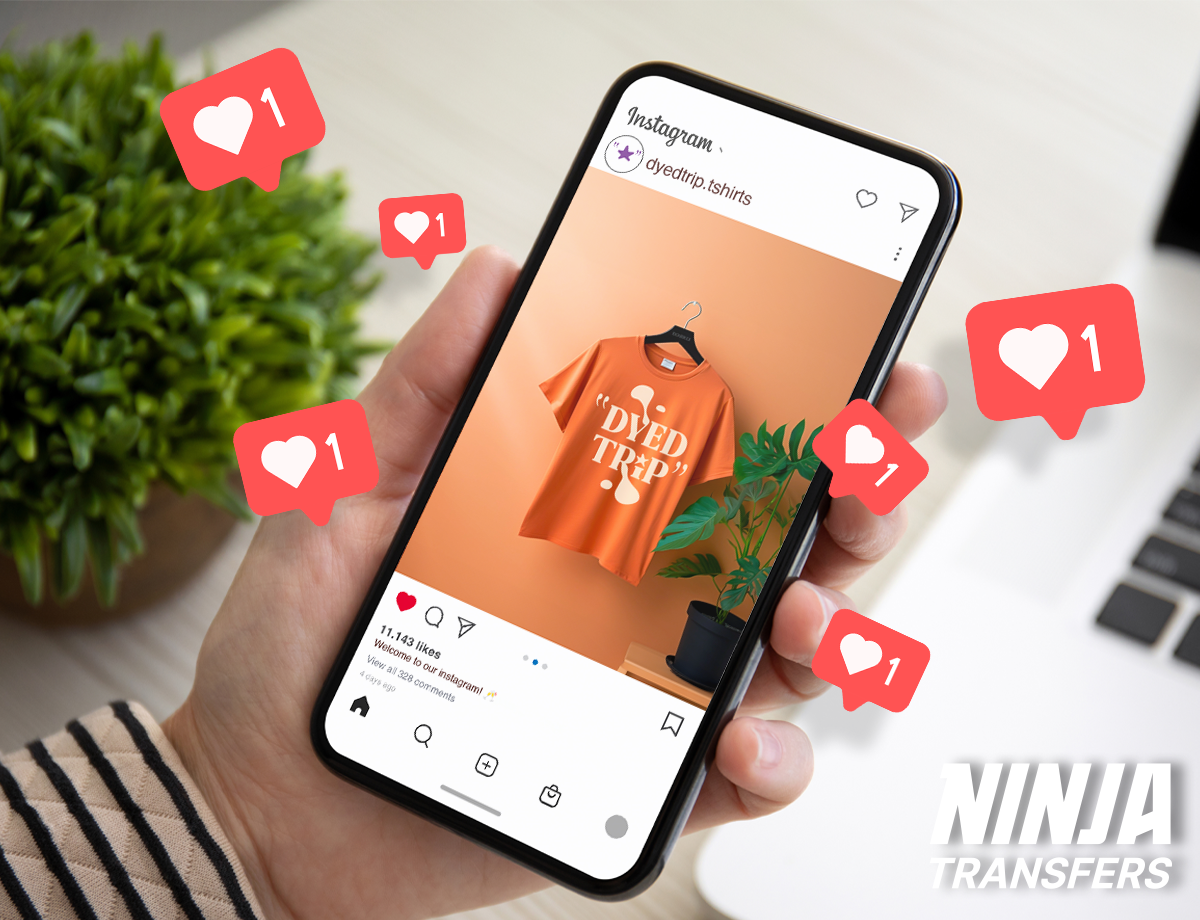
Step 7: Craft Marketing Strategies That Reinforce Branding
Impactful marketing should spotlight why your brand matters while showcasing offerings. This step explores intentionally embedding your visual identity and essence into cohesive promotions that feel like natural brand extensions vs. generic plugs. When campaigns creatively strengthen your narrative, customer bonds deepen beyond transactions.
Design Cohesive Campaigns That Align with Brand Values.
Ensure Consistent Brand Markers Across Efforts: All marketing touchpoints should seamlessly reflect your visual branding, from social advertisements to email newsletter templates. Repeated exposure to your logo, color palette, and messaging style boosts recognition and trust. Cohesion also demonstrates confidence in your identity rather than relying on trendy gimmicks.
Infuse All Promotions with Your Brand Ethos: Promoting limited edition tee launches or seasonal sales provides ideal opportunities to reinforce what your brand represents in customers' lives. Consider an aspirational slogan like "Wear Your Truth" with imagery of creators embracing self-expression. This promotional framing simultaneously showcases offerings and empowers values in an organic branded narrative.
Implement Inventive Campaigns That Spotlight Your Brand
Leverage Promotions to Magnify Brand Visibility: Contests, giveaways, and limited collections present openings to creatively spotlight your essence beyond pushing products. A social media design competition could reimagine your logo for special charity merchandise. An Earth Day lineup could feature emerging artists creating activist art. Showcasing collaborations, events, and causes that align with your ethos organically builds community while expanding reach. This innovative framing entices target audiences who are inherently attracted to your brand values.
Case study: Levi's "Circles" Campaign
In 2022, Levi's launched its "Circles" campaign, collaborating with artists to create visually impactful images of vintage jeans digitally "circling" endlessly. This symbolized ongoing product longevity through recycling practices. Videos explained the craft behind remaking vintage jeans to reduce waste.
The campaign fused Levi's legacy products with sustainability commitments using emotive photographs. It reinforced their leadership, combatting fast fashion's impacts while honoring their heritage. Centering values-focused partnerships anchored in branded storytelling, it drew industry acclaim and exponential exposure. The inventive framing organically compelled audience sharing across channels, embedding messaging about responsible production.
Step 8: Continuously Evolve Your Brand Strategy
An influential brand in today's dynamic landscape responds adeptly to ever-changing consumer needs and cultural shifts. This closing step spotlights proactive, ongoing techniques to gauge your branding's resonance and nimbly adapt approaches accordingly. Consistently monitoring performance and optimizing based on insights cements enduring relevance.
Monitor Metrics to Identify Optimization Opportunities.
Listen to Customer Feedback Channels: Gather intel from reviews, social conversations, and support interactions. Probe for brand visibility and emotional connections through surveys. This qualitative data reveals changing attitudes and desires to address through updated messaging or campaigns. Ongoing engagement nourishes bonds over transactions.
Track Performance Metrics: Quantitative data like email open rates, site visits, and sales funnel conversions provide tangible assessments of branding effectiveness. Leverage free analytic tools for actionable insights on reach, retention, and overall growth that could benefit from strategy pivots. Optimizing based on actual user behavior catalyzes growth through sharpened resonance.
Review Brand Presence Regularly: Revisit touchpoints frequently, auditing messaging tone, visual cohesion, and experience consistency against initial guidelines. Flag any deviations, diluting intended positioning for realignment. Consistent immersion strengthens familiarity and loyalty over time.
[image: T-shirt business owner working on their laptop, analyzing charts and graphs suggesting business growth]
Conclusion: Commit to Continuous Brand Growth
Cultivating an influential brand is not a one-and-done endeavor; it's a continuous process of refinement and adaptation. But the long-term dividends of this dedication are invaluable: enhanced loyalty, market positioning, and resilience over fleeting trends. By proactively embracing the ongoing work of strategically leveling up recognition and relevance, each phase lays reinforcement, brick by brick, until your identity becomes an enduring fixture in your community's landscape.
Summarizing our journey cultivating enduring brand recognition:
- Define Your Brand's Core Identity: Clarify the authentic values and motivations driving your business.
- Create a Memorable Brand Name and Slogan: Conceptualize strategic names, taglines, and messaging encapsulating your essence.
- Develop a Unique Visual Identity and Logo: Embed visual touchpoints with cohesive branding elements that consistently trigger your individuality.
- Optimize Brand Placement on T-Shirts: Harmonize apparel graphics with logo placement and branding for optimal consumer resonance.
- Ensure Brand Consistency Across All Channels: Sustain a unified presence across channels through cross-platform alignment anchored by a style guide.
- Craft a Compelling Brand Story: Resonate emotionally through intentionally sharing narratives that humanize your journey.
- Implement a Brand-Focused Marketing Strategy: Design inventive campaigns spotlighting offerings as natural byproducts of your brand values.
- Evaluate and Evolve Your Branding Strategy: Respond to shifts with integrity by realigning branding to uphold authentic connections.
Remember, establishing a strong brand identity is not a one-time effort; it's a continuous journey of growth and adaptation. The long-term benefits of a well-crafted brand are immense, including increased customer loyalty, enhanced market position, and improved business resilience.
Stay enthusiastic and proactive in your approach to brand development. Embrace the challenges and opportunities of evolving your brand, and remember that each step you take is a stride toward a more robust and recognizable presence in the market.
Our next chapter is Designing T-Shirts That Sell, where we'll dive into the creative and strategic aspects of designing t-shirts that look great, resonate with your target audience, and drive sales.

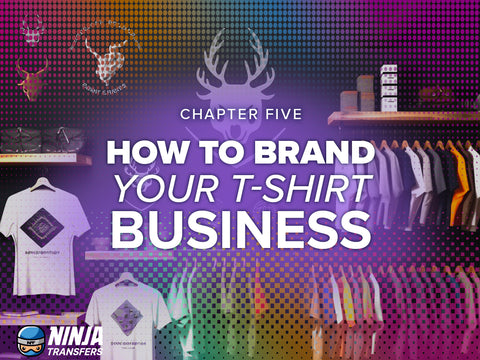
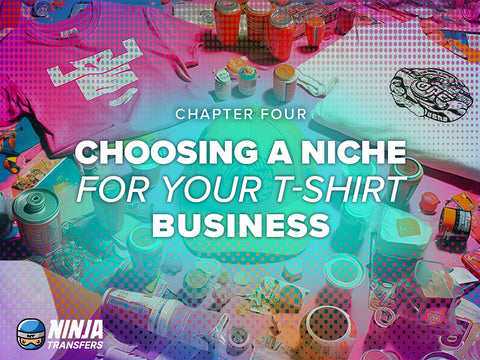
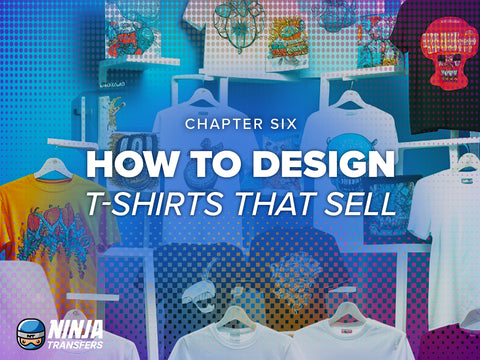
评论 (0)
这篇文章没有评论。成为第一个在此留言的人!